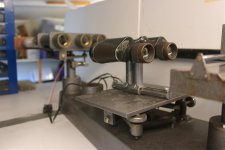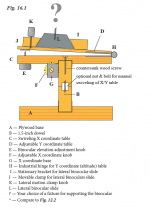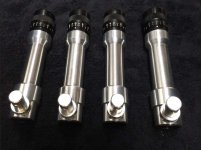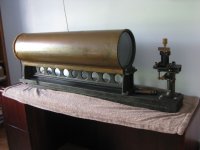chris6
Well-known member

I can't remember where I read about it but, when they just don't feel right, it seems that binoculars might be checked by doing the following. Holding the binoculars level at half-arms-length while addressing a horizontal edge straight ahead, such as guttering or a window frame:-
It is somehow feasible to allow the eyes to relax so that each one sees an image through the eyepiece on its own side. It can take a few tries but eventually both images can be observed separately, but at the same time, when it feels just like looking into the distance.
Then it seems normal for the guttering/window frame to look continuous, but perhaps it is a confirmation of something wrong if one eye sees the guttering at a different level than the other.
Particularly when the guttering is discontinuous, I think there may also be differences in the colour tint between the two images, or in apparent size or sharpness (dioptre setting having been carefully checked in advance).
I take it that this might be a way of eliminating any adjustments by the viewer's eyes, which might otherwise largely or partly mask problems, but is this 'test' any good please? and, apart from apparent discontinuity of horizontal straight lines, what might such other effects indicate?
It is somehow feasible to allow the eyes to relax so that each one sees an image through the eyepiece on its own side. It can take a few tries but eventually both images can be observed separately, but at the same time, when it feels just like looking into the distance.
Then it seems normal for the guttering/window frame to look continuous, but perhaps it is a confirmation of something wrong if one eye sees the guttering at a different level than the other.
Particularly when the guttering is discontinuous, I think there may also be differences in the colour tint between the two images, or in apparent size or sharpness (dioptre setting having been carefully checked in advance).
I take it that this might be a way of eliminating any adjustments by the viewer's eyes, which might otherwise largely or partly mask problems, but is this 'test' any good please? and, apart from apparent discontinuity of horizontal straight lines, what might such other effects indicate?









